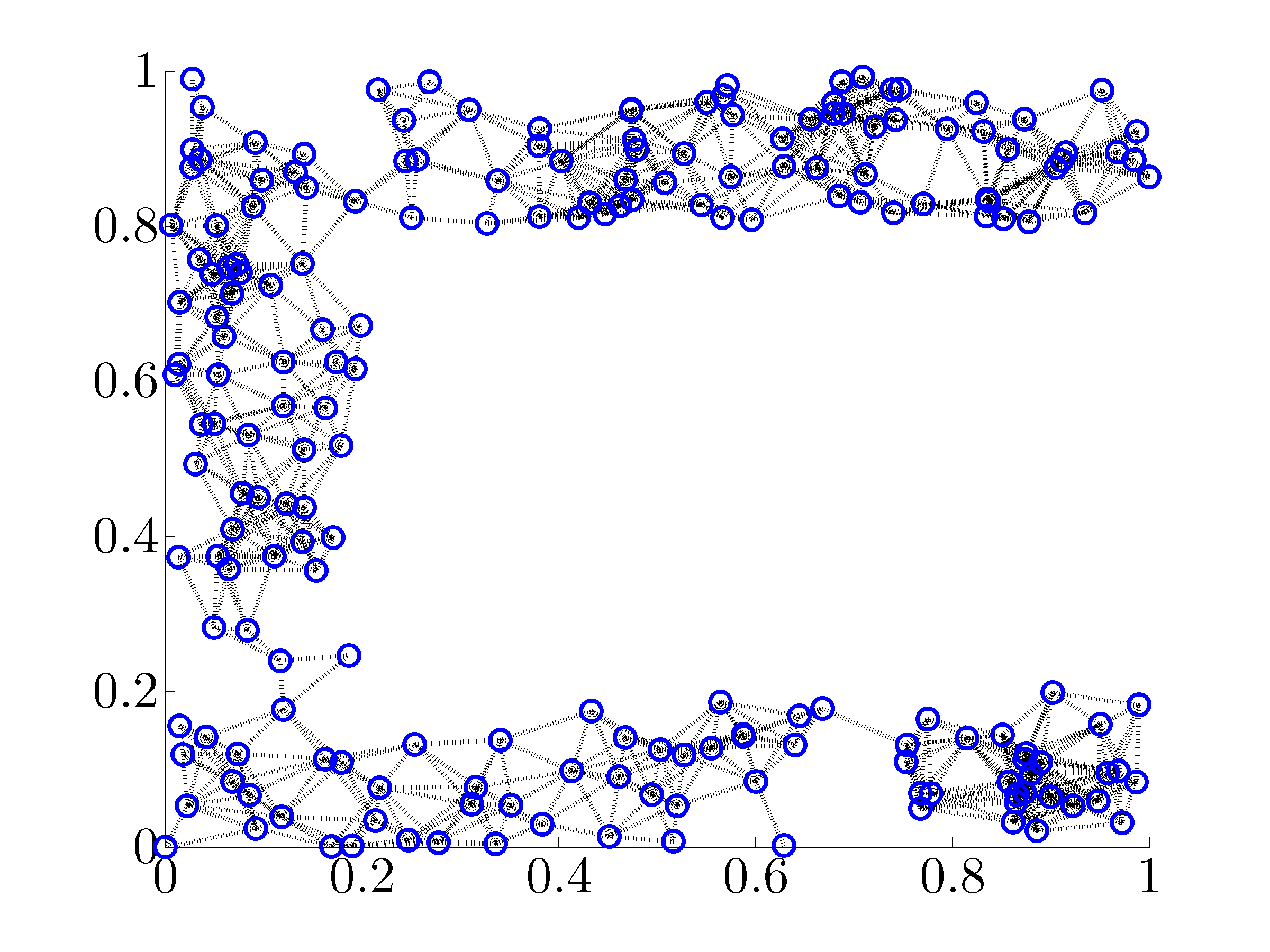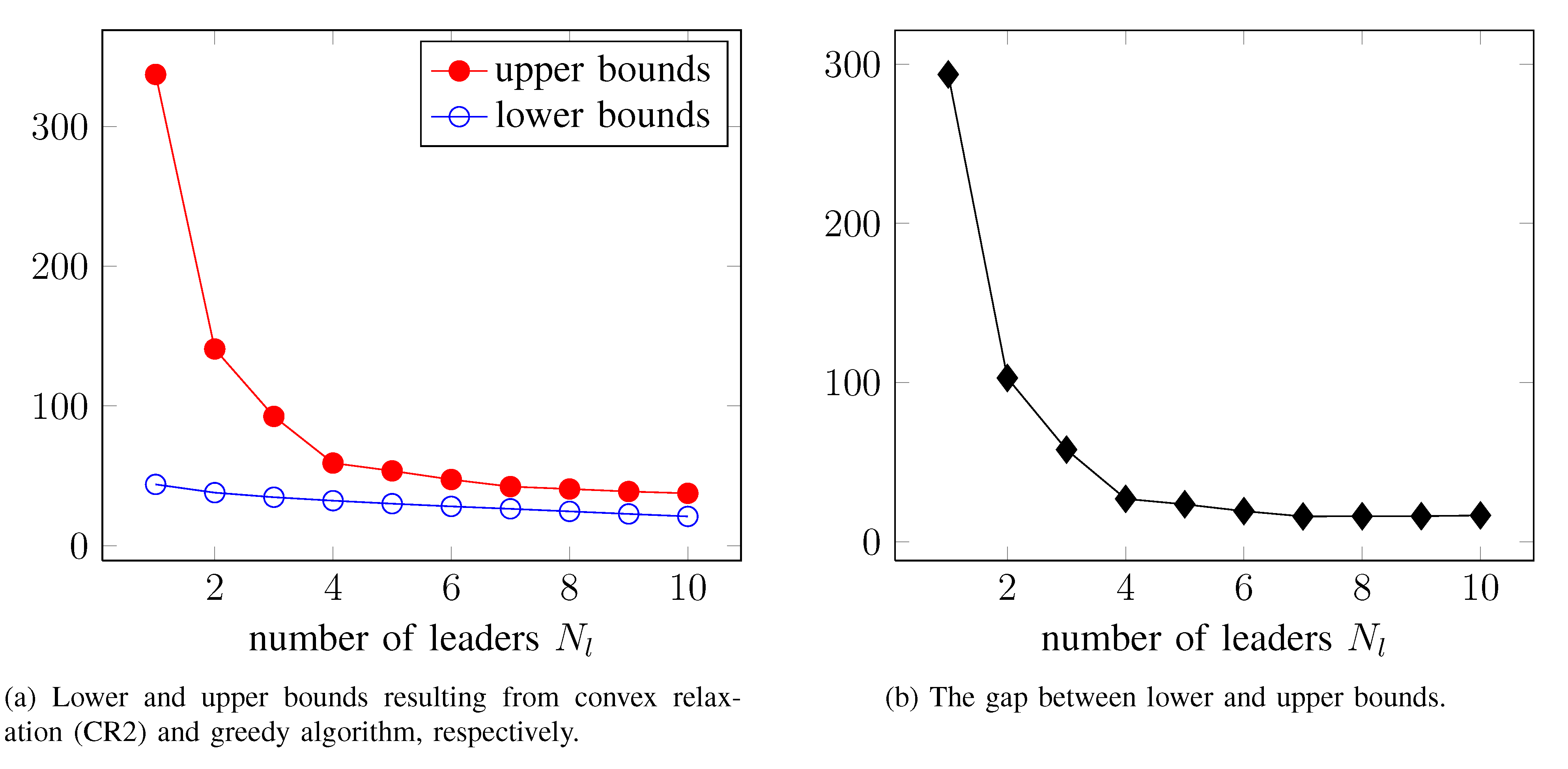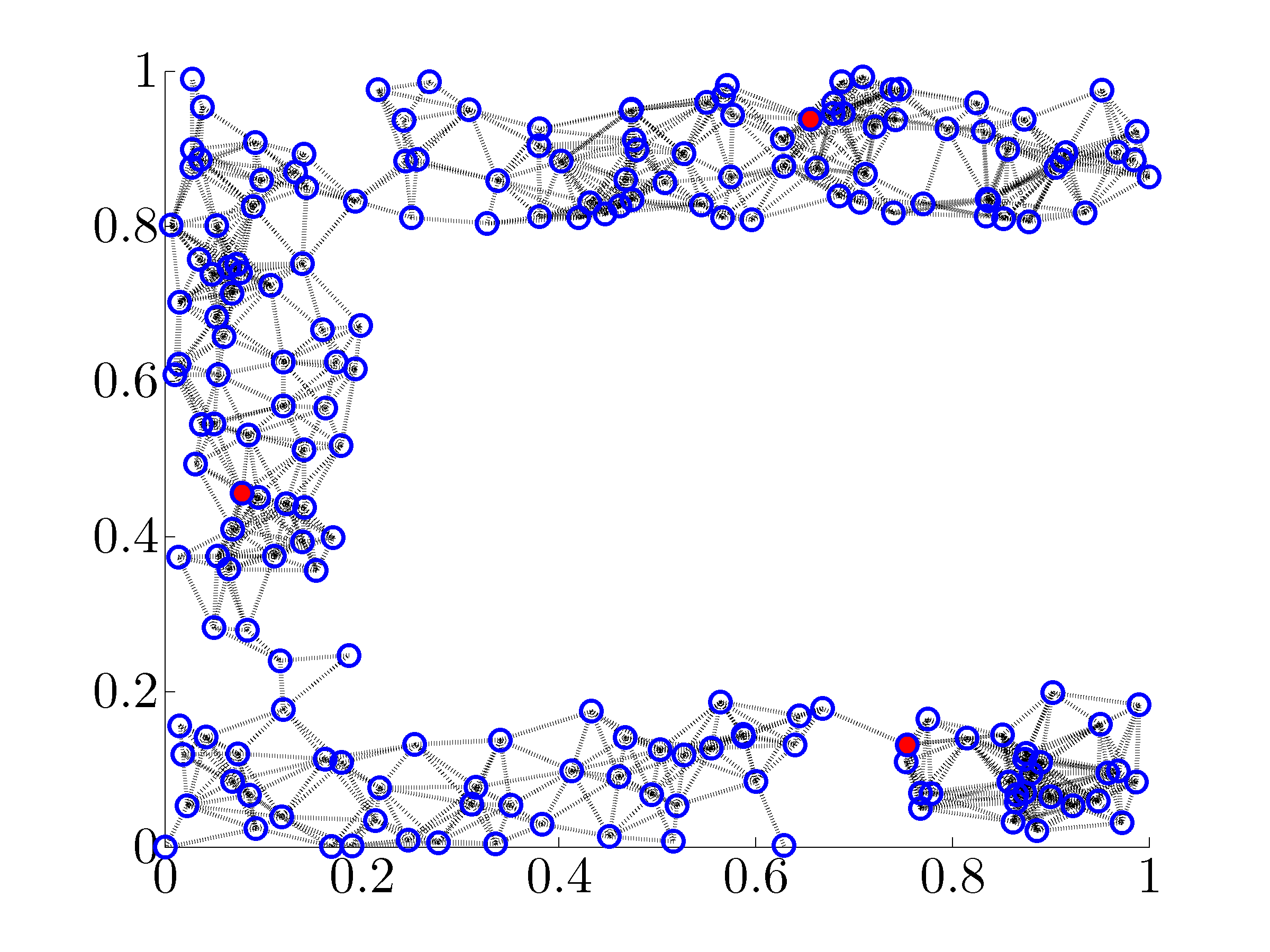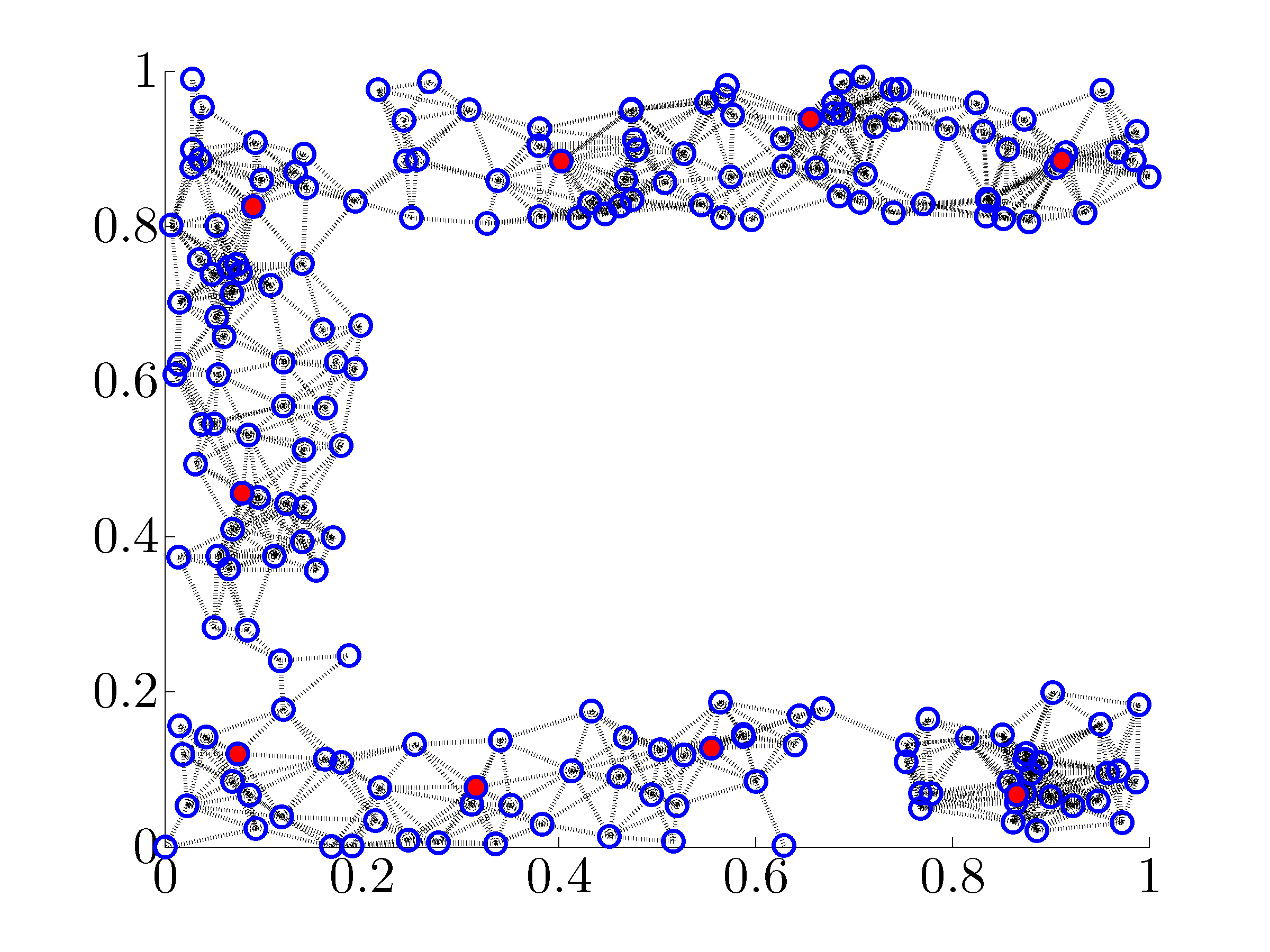% A C-shaped network example for noise-free leader selection problem. n = 200; Length = 1; load position_cshape % % Otherwise generate random nodes in a C-shaped region % ind = 1; % while 1 % pos_temp = Length*rand(1,2); % if pos_temp(1) <= Length/5 || pos_temp(2) >= Length*(4/5) || pos_temp(2) <= Length*(1/5) % position(ind,:) = pos_temp; %#ok<SAGROW> % ind = ind + 1; % end % if ind == n+1 % break; % end % end % radius that determines the neighbors of nodes r = Length/10; % draw neighbors and compute the incidence matrix of neighboring nodes [Eg,idx] = neighbors(n,position,r); % form the graph Laplacian L = Eg*Eg'; % kappa is taken as the diagonal of L kappa = diag(L); % Start solving the leader selection problem kval = 1:1:10; % pre-allocate memory for data collection Jlow = zeros(size(kval)); Jup = zeros(size(kval)); LSgreed = zeros(n,length(kval)); for i = 1:length(kval) Nl = kval(i); flag = 2; % for the noise-free leader selection formulation [Jlow(i),Jup(i),LSgreed(:,i)] = leaders(L,Nl,kappa,flag); end
A C-shaped network
 |
We consider the selection of noise-free leaders in a network
with |
Matlab code
Computational results
Download Matlab code Cshaped_network_example.m to reproduce these figures.
Performance bounds
 |
Bounds on the global optimal value of the noise-free leader selection problem
 for the C-shaped network example.
for the C-shaped network example.
Selection of leaders
 |
Selection of |
 |
Selection of |
 randomly distributed nodes in a C-shaped region within a unit
square. A pair of nodes communicates with each other if their distance is not
greater than
randomly distributed nodes in a C-shaped region within a unit
square. A pair of nodes communicates with each other if their distance is not
greater than  units. This example was used in
units. This example was used in
 noise-free leaders using greedy algorithm
(i.e., one-leader-at-a-time algorithm followed by the swap procedure).
noise-free leaders using greedy algorithm
(i.e., one-leader-at-a-time algorithm followed by the swap procedure).  noise-free leaders using greedy algorithm.
noise-free leaders using greedy algorithm.
 formulations lead to almost identical selection
of leaders.
formulations lead to almost identical selection
of leaders.